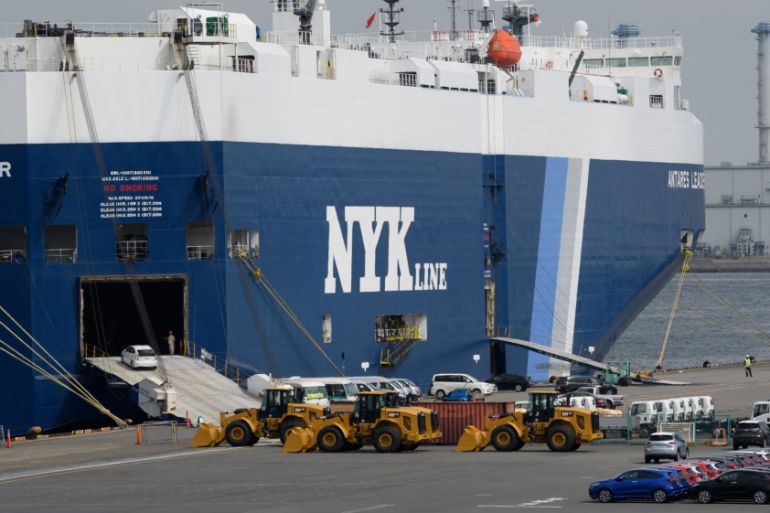Trade troubles: Japan, Singapore exports fell sharply in May
Economists say May could represent a low point, after which demand for Asian goods is likely to pick up.

Latest export figures from two of Asia’s most trade-dependent economies – Japan and Singapore – show that as countries around the world slowly start to lift lockdowns that have crippled demand for consumer goods, the recovery is likely to be patchy and slow.
Japan’s exports fell in May at the fastest pace since the 2009 global financial crisis as car shipments to the United States plunged, bolstering expectations for a deep contraction in the world’s third-largest economy this quarter.
Keep reading
list of 3 itemsJapan’s big push to bring manufacturing back from China
‘A more troubled’ world: Singapore’s PM sees tougher future
Weak global demand for cars and slowing business spending could drag on Japan’s export-led economy, even as China-bound trade shows signs of picking up and US and European economies reopen.
The trade data came a day after the Bank of Japan increased its support for struggling businesses through lending schemes to $1 trillion.
Ministry of Finance data released on Wednesday showed Japan’s exports fell 28.3 percent in the year to May, worse than a 26.1-percent decrease expected by economists in a Reuters poll.
That followed a 21.9-percent decline in April and marked the biggest annual drop since September 2009.
Exports bound for the US – Japan’s key market – halved to mark the biggest annual drop since March 2009, due to a more than 70-percent decline in shipments of cars and car parts, the trade data showed.
Exports to China, Japan’s largest trading partner, fell 1.9 percent in the year to May, a smaller drop than the prior month’s 4 percent annual decline.
Shipments to Asia, which account for more than half of Japanese exports, declined 12 percent, and exports to the European Union also fell 33.8 percent.
Japan’s economy slipped into recession for the first time in four and a half years in the first quarter, and is on course for its deepest post-war slump as the pandemic ravages businesses and consumers.
A ‘horrible’ picture
Some analysts warn of an even bleaker picture for the current quarter as consumption crumbled after the government asked citizens to stay home and businesses to close.
“This is a helpful reminder that while some domestic figures may well bounce as some lockdowns ease, the global picture remains horrible,” Robert Carnell, head of research for the Asia-Pacific region at Dutch bank ING, said in a research note sent to Al Jazeera.
But others say demand for Japanese goods could recover in the coming months.
“We suspect that May was the nadir for external trade as many of Japan’s trading partners started to emerge from lockdowns,” Capital Economics’ senior Japan economist Marcel Thieliant said in a note sent to Al Jazeera.
Imports fell 26.2 percent in the year to May, versus the median estimate for a 20.4-percent decrease, posting the biggest drop since October 2009.
As a result, the trade balance resulted in a deficit of 833.4 billion yen ($7.8bn), versus the median estimate of a 1.07 trillion yen ($10bn) shortfall.
For Singapore, its exports of goods manufactured in the country – such as pharmaceuticals and electronics, and excluding transhipments of oil, collectively known as non-oil domestic exports (NODX) – fell by 4.5 percent in May compared with the same month last year, data from the trade agency Enterprise Singapore showed, slowing sharply from the 9.7-percent rise the month before.
This was worse than the 0.1-percent decline predicted by economists in a Reuters poll.
“Two consecutive months of month-on-month NODX falls confirms that the strength seen earlier in the year is wearing off,” Prakash Sakpal, an economist at ING, said in the note sent to Al Jazeera.
“Indeed, it was lop-sided vigour, unsurprisingly led by a surge in pharmaceutical exports, while key exports electronics were missing in action. This state of affairs reversed in May with pharma posting a 7 percent fall and electronics surging by 12.5 percent, Sakpal added.